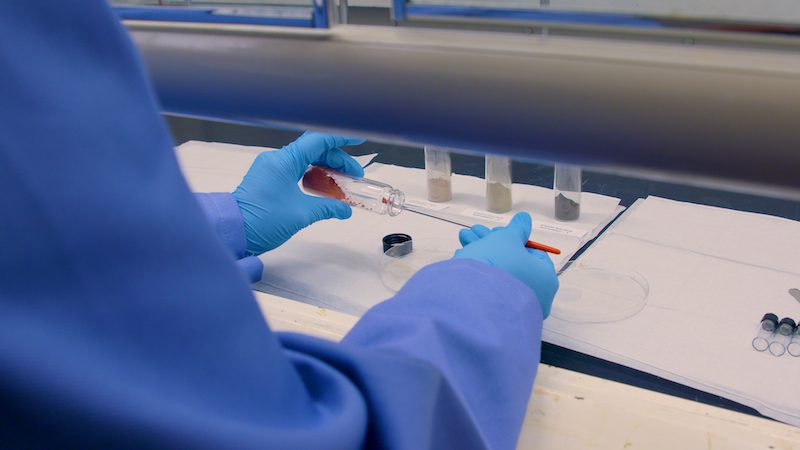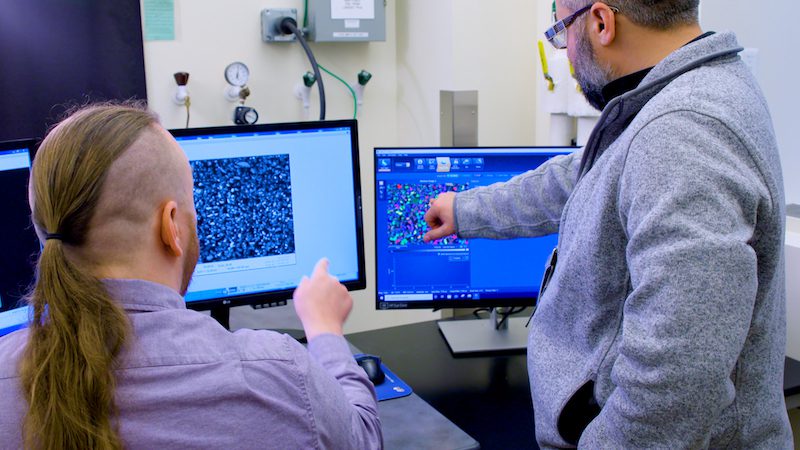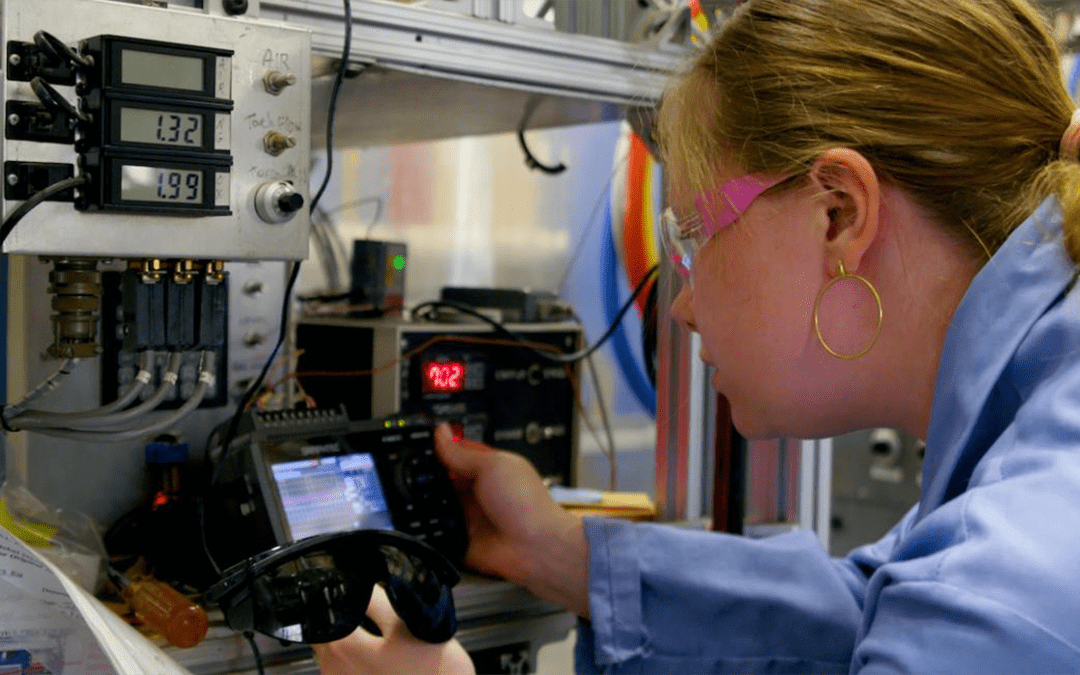Getting Granular: How GE Aerospace Engineers Used Science to Solve an Engine Durability Problem
November 14, 2023 | by GE Reports
The item presently on their agenda is toughening up the advanced engine with special dust durability fixes in 2024. The update will reflect the latest understanding from around 15 years of lab work, thousands of hours of dust ingestion tests, and 44 million hours of field data and advanced analytics from GE Aerospace’s other jet engine families, says Carlos Perez, services engineering manager at GE Aerospace, who is based in Cincinnati. “The dust tests on LEAP engines are some of the longest endurance tests we’ve ever run in terms of simulating the environments that we see in the Middle East,” says Perez, who is chalking off his 20th year at GE Aerospace.
During that time, he has seen dust ingestion testing evolve from rough-and-ready experiments into what it is today: a rigorous science that leverages carefully simulated environments, a wealth of mechanical engineering know-how, and even GE Aerospace’s homemade testing powder, which engineers are affectionately calling “pixie dust.”
 Eeshani Godbole, a GE Aerospace Research scientist in ceramics, studies different variations of GE’s dust samples under a chemistry hood in GE Aerospace's Research Labs in Niskayuna, New York. Top: GE Aerospace Senior Ceramics Engineer Margeaux Wallace in the Metallurgy and Ceramics building at GE Aerospace’s Research campus in Niskayuna, conducting flame tests with dust on sample parts to better understand the characteristics of dust when subjected to hot temperatures inside the engine. Images credit: GE Aerospace Research
Eeshani Godbole, a GE Aerospace Research scientist in ceramics, studies different variations of GE’s dust samples under a chemistry hood in GE Aerospace's Research Labs in Niskayuna, New York. Top: GE Aerospace Senior Ceramics Engineer Margeaux Wallace in the Metallurgy and Ceramics building at GE Aerospace’s Research campus in Niskayuna, conducting flame tests with dust on sample parts to better understand the characteristics of dust when subjected to hot temperatures inside the engine. Images credit: GE Aerospace Research
Perez explains that GE Aerospace’s engineers have made swift progress on the problem of engine durability in recent years by using “turn on, turn off” techniques on the test stand in Cincinnati. It’s like a vast exercise in scientific control: Engineers are running multiple engines for thousands of cycles (each cycle being a full simulation of the engine operation from gate to gate), some with dust, some without dust, and then some with hardware improvements. Test cycles with dust simulate the volume, trajectory, and velocity of airborne debris that the LEAP engine might encounter in a typical Middle Eastern journey. “We’re essentially matching the kind of distress that we see in the field, while also running twice the number of testing cycles,” he says.
Perez is looking forward to lifting the lid on dust ingestion science for delegates at the Dubai Airshow, which takes place this week. The Middle East, nearly all of which is desert or dry land, is set to become one of the world’s fastest-growing airline markets, with much of the growth driven by narrow-bodied aircraft, which serve short-haul routes. The LEAP graces the wings of both the Boeing 737 MAX and the Airbus A320neo, the aircraft that account for the vast majority of the narrow-body market.
Learning Curve
Mindful of the Middle East’s growing importance, GE Aerospace engineers have pushed the envelope on dust ingestion for all its jet engine families. For example, they’ve subjected the GE9X, the most powerful jet engine in the world, to thousands of testing cycles in Peebles, Ohio. Perez calls the tests “valuable learning” and says this learning will stand the GE9X in good stead for when it enters operations on the wing of the Boeing 777X. But it’s a different kind of challenge to dust-proof an engine that’s already out in the field. That’s because engineers are more constrained in that they are adapting dust-tolerant fixes or updates to existing parts. (LEAP has been flying on commercial airplanes since 2016.)
Fortunately, GE Aerospace engineers can resort to mountains of institutional knowledge. Perez remembers the dust tests of the early 2000s on the LEAP’s predecessor, the CFM56, a high-bypass turbofan engine that entered service in 1982. “We used sand, because our hypothesis was that this dust was coming right off the side of the runway,” he says. “We put a dustpan filled with Arizona road dust in front of the engine to see what happened,” he says. And what happened was a good deal of damage to the engine’s fan blades.
 GE Aerospace Research scientists Jason Leszczewicz and Dan Ruscitto use a scanning electron microscope to analyze the morphology and elemental composition of dust samples at GE Aerospace Research’s Material Characterization Lab in Niskayuna. Credit: GE Aerospace Research
GE Aerospace Research scientists Jason Leszczewicz and Dan Ruscitto use a scanning electron microscope to analyze the morphology and elemental composition of dust samples at GE Aerospace Research’s Material Characterization Lab in Niskayuna. Credit: GE Aerospace Research
It was time to go back to the drawing board, since it was obvious that firing a molehill of tiny stones and pebbles into the fan of a jet engine didn’t exactly mimic real-life field conditions. Engineers began their work at ground zero, analyzing the arid surfaces and low altitudes of deserts. They also took a closer look at the dust that was entering their engines. What they discovered very quickly was that the culprit wasn’t ground-level dust at all, but airborne particles.
“These immensely powerful jet engines were being degraded by this really fine dust suspended in the air,” says Perez. “We’re talking about particles that are one-tenth of the width of a human hair.” Since the first few thousand feet of altitude are relatively dense with particulate matter, they deduced that the risks of dust ingestion were highest during takeoff.
When the low-altitude particles sneak into an engine’s core, where the compressor, combustor, and turbine are located, they wear down crucial components. This affects an engine’s efficiency and performance, meaning that the aircraft needs to burn more fuel to generate the same amount of thrust, thereby emitting more carbon dioxide.
Pixie Dust
GE Aerospace’s engineers needed to prove jet engines such as the LEAP in these invisible dust clouds, but they couldn’t just set up a test rig in the middle of the desert, since they wouldn’t have the all-important ability to “turn off” dust ingestion. The only way was to build their own simulation, starting with their own pixie dust. “Working with three PhD-level geologists, we’ve manufactured our own concoction,” says Perez. The homemade compound has the consistency of talcum powder, puffing into the air like smoke rather than falling straight to the ground.
But they’d solved only one part of the problem. Engineers also needed to simulate the dust flow that the engine might encounter in a typical Middle East flight. “This is pretty difficult, since we’re working with an amorphous solid that kind of entrains itself into the air,” says Perez. They’ve overcome the issue by erecting a metal structure in front of the LEAP engine on their test stand, which supports an array of equipment that can regulate dust flow right into the core of the engine. They’ll turn the equipment off again, rinse, and repeat, thousands of times over.
“It looks quite low-tech, since it’s scaffolding and a bunch of nozzles,” says Perez. “But it’s actually its very own engineering marvel.” He explains that engineers drew on computational fluid dynamics to understand the inlet flow field and find the optimum positioning of the equipment. “Now we can shoot the dust into the streamlines so that it goes into the engine in exactly the right place.”
GE Aerospace’s 15-year mission has required a sustained, intense focus and financial commitment. Is it worth it? “We want to deliver for our customers,” says Perez. “This means giving them the most reliable, long-living product that they’ve ever seen.”
